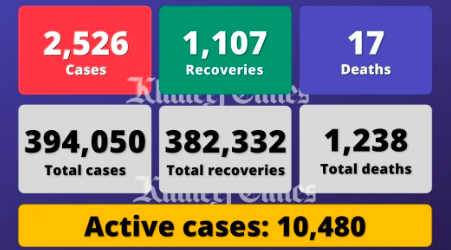Early data from NFHS-5 show decline in key anthropometric and nutrition indicators
With a debilitating death toll and an economic recession, India has had among the worst effects of the COVID-19 pandemic. There is anecdotal evidence that the pandemic and lockdown measures have led to new complications related to food consumption and food security for impoverished Indians. But an express indication of the possible scale of the crisis can be gleaned from the data from the newly released National Family Health Survey 2019-20 which was conducted before the pandemic and its impact. The partially released early data from NFHS-5 for 22 States/Union Territories — data for U.P., M.P. Tamil Nadu, Rajasthan, Punjab, Jharkhand and Odisha are not yet out — shows a disappointing record on metrics such as child nutrition and adult anthropometric measurements, suggesting the exacerbation now of an already fraught situation. NFHS-5 shows that four key metrics for the nutritional status of children declined in 2019-20 compared to levels in 2015-16 (NFHS-4) in many of the surveyed States. Gujarat, Maharashtra and West Bengal recorded an increase in the percentage of anaemic and wasted (low weight for height) children compared to even the 2005-06 survey. In the key indicator of childhood stunting, there has been an increase in 13 of the 22 States/UTs in comparison to NFHS-4, with a noticeable improvement only in Bihar and Assam. Even here, the reduction in stunting numbers is lower than the government’s targets. Bihar has shown a promising decline of 5.4 % points in stunting, but still retains the highest percentage of stunted children (42.9%) among big States.
On the flip side, NFHS-5 also flags improvements in other factors that contribute to malnutrition and poor health outcomes — in access to sanitation and clean cooking fuels. In indicators related to women’s well-being (with variance across States), spousal violence declined in 17 of 22 States/UTs, child marriage declined in 18, and access to bank accounts rose in all of them, compared to NFHS-4. But the persistence of poor anthropometric measures related to hunger and nutrition suggests that existing programmes to address them, such as POSHAN Abhiyaan, will need a push and focus to meet targets such as the 2%-point decrease in childhood stunting every year. More importantly, the complications arising out of the pandemic should make the Centre and States refocus on welfare delivery as a concerted strategy to eradicate hunger and extreme poverty. This is an imperative that would not just meet the UN’s Sustainable Development Goal targets but will also ensure the well-being of citizens in a country that showed significant promise in combining economic growth and general welfare in the last couple of decades before encountering major reversals lately.






More Stories
Economy reviving, but renewed surge of Covid-19 infections poses risk: RBI
EU audits Serum’s facility as AstraZeneca looks to boost supplies: Report
Maruti Suzuki reports 11.8% rise in sales to 1,64,469 units in February